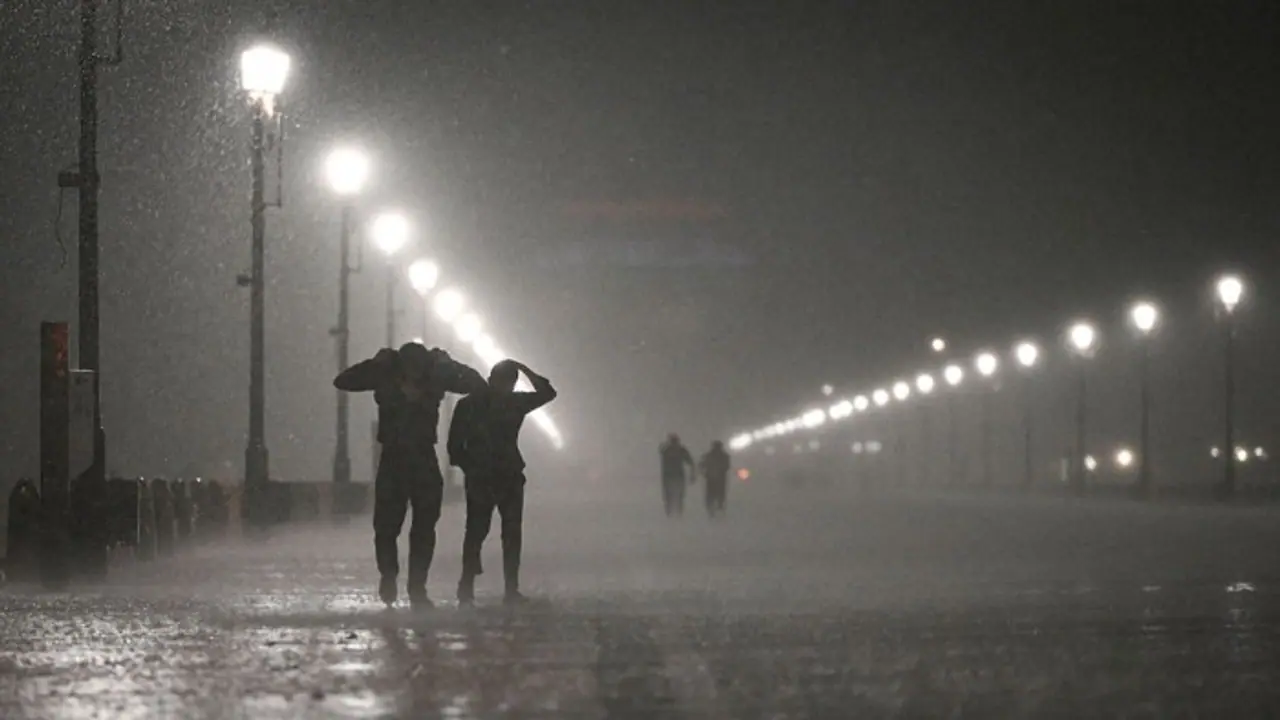Delhi saw a rare, intense thunderstorm on Sunday night, resembling an eastern Kalbaisakhi storm. Experts link it to a mix of weather systems and climate change, indicating shifting storm patterns across northern India.
On very early Sunday morning, Delhi-NCR faced an intense thunderstorm with gusty winds and heavy rain, surprising many residents. This kind of weather is typical in eastern India and is locally known as Kalbaisakhi or Nor’wester. But its appearance in Delhi has puzzled weather experts and sparked fresh concerns about changing weather patterns in the region.

What is Kalbaisakhi?
Kalbaisakhi is a violent thunderstorm usually seen during April and May in eastern states like West Bengal, Bihar, Jharkhand, Odisha, and Assam. The storm usually begins in the northwest and moves east, bringing sudden rain, strong winds, and sometimes even hail or tornadoes.
These storms are a regular part of the pre-monsoon season in the east. They offer relief from the heat but can cause damage due to their intensity. The name 'Kalbaisakhi' comes from ‘Baisakh,’ the Bengali month (April-May), and means ‘disaster of Baisakh.’
Why was Sunday’s storm unusual for Delhi?
Such intense weather is rare in mid-May for Delhi, especially in the form of a Kalbaisakhi-like system. Normally, Delhi experiences dust storms or dry winds during this time. But on Sunday, the capital witnessed powerful winds, heavy rain, and thunder — a weather condition more commonly seen in eastern India.
Meteorologists believe the storm in Delhi had many features of a Kalbaisakhi. The timing, strength, and sudden onset were similar. It was recorded around 2 AM, causing damage to trees and temporary power outages in several areas.
What caused this storm in Delhi?
Experts say several weather systems combined to create this unusual storm. Here's what happened:
Western Disturbance: A weather system from the Mediterranean moved across Pakistan and Jammu and Kashmir into Delhi-NCR. These disturbances often bring unseasonal rain to northern India.
Cyclonic Circulation: Upper-level air movements over Haryana and Punjab brought moisture from both the Arabian Sea and the Bay of Bengal.
Convective Activity: Delhi’s high daytime temperatures, mixed with rising humidity, created the perfect setting for storm clouds to form and grow rapidly.
Monsoon Trough: As May ends, the monsoon trough begins to shift. This influences weather over north India, adding to moisture and instability in the air.
This rare combination led to a sudden, powerful storm that resembled a Nor’wester in structure and behaviour.
Climate change and shifting storm zones
The Kalbaisakhi-like storm in Delhi may be a warning sign. Climate experts say that extreme weather events are no longer limited to specific regions. As the earth warms, weather patterns are becoming more unpredictable.
Kalbaisakhi was once mostly seen in the east. But if such storms begin appearing in western and northern regions, it may mean the zones where these storms form are expanding.
This could have serious effects on agriculture, city planning, and disaster preparedness in parts of the country that never expected such storms before.


